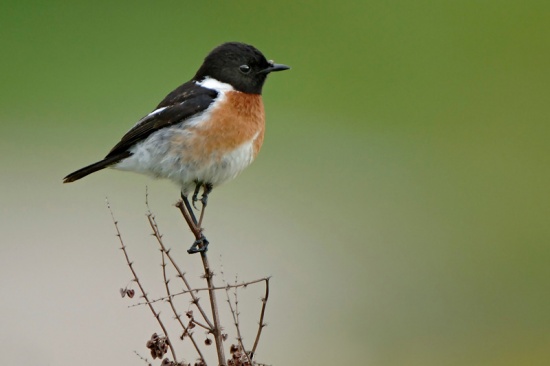(Genus tags added) |
|||
| Line 1: | Line 1: | ||
'''Alternative name: Common Chat''' | '''Alternative name: Common Chat''' | ||
| − | ;Saxicola torquatus | + | ;[[:Category:Saxicola|Saxicola]] torquatus |
[[Image:African_Stonechat.jpg|thumb|550px|right|Photo by Mybs]] | [[Image:African_Stonechat.jpg|thumb|550px|right|Photo by Mybs]] | ||
| Line 25: | Line 25: | ||
{{GSearch|Saxicola+torquatus}} | {{GSearch|Saxicola+torquatus}} | ||
| − | [[Category:Birds]] | + | [[Category:Birds]] [[Category:Saxicola]] |
Revision as of 15:17, 6 October 2008
Alternative name: Common Chat
- Saxicola torquatus
Identification
Black head, white half-collar, black back, white rump, black tail, black wings with a large white patch on the top side of the inner wing, dark orange red upper breast, white or pale orange lower breast and belly. Females brown above and on head, indistinct paler eyebrow line, chestnut-buff rather than orange below, and less white on the wings.
Distribution
Southern Africa, north to Senegal and Ethiopia, with outlying populations in the mountains of southwest Arabia and on Madagascar and Grand Comoro Island.
Taxonomy
There are 17 subspecies.
Habitat
This is a bird of damp grasslands and vleis. It is also found in pastures and fields. In many areas it is resident, but some birds are non-breeding migrants, and in that case are not restricted to damp areas, but may be found in open drier country. It is usually seen in pairs and usually perches up on a stick or shrub. It flies down onto the ground, and often flicks its wings.
Behaviour
This species eats mainly insects and worms.
It breeds mainly in the summer months. The nest is well hidden inside a clump of vegetation and consists of an untidy bowl of grass and rootlets. It is lined neatly with rootlets and animal hairs.




